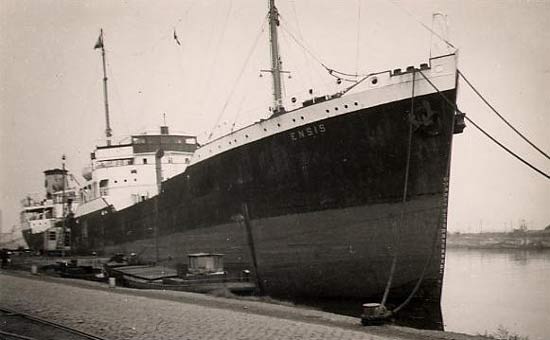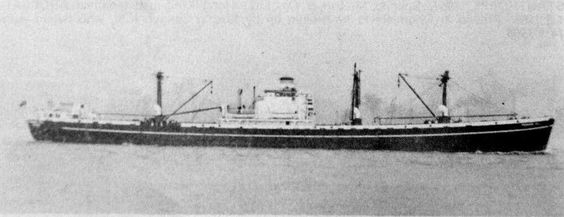Sunday 8 June 1941
 |
| U-123 and U-201 at Lorient, 8 June 1941 (Federal Archive, Bild 101II-MW-4260-37) |
While the British are confident, in fact, the Vichy French under General Dentz greatly outnumber the attacking British (all figures here are given differently in different sources, but everyone agrees that the Vichy French have more men). Dentz commands 45,000 men organized in 18 regular battalions that have 120 guns, 90 tanks, and about 100 aircraft. The British force comprises about 35,000 troops (18,000 Australians, 2000 Indian troops, 9,000 British troops, and around 6,000 French). The RAF has a large collection of aircraft available in Cairo, but allocate only about 70 to Operation Exporter. Both sides have modern fighters, the RAF P-40 Kittyhawks and Hawker Hurricanes, the French Dewoitine D.520 fighters, but both sides also have a motley assortment of planes from earlier eras.
The RAF (Hurricanes of No. 80 Squadron) raids the French airbase at Rayak, with the goal of the destruction of recently arrived Martin Maryland 167F bombers of French 39 Squadron, 1st Bomber Group. Australian 3rd Fighter Wing also raids Rayak with their P-40s, which confuses the French defenses because they are unfamiliar with US fighters.
Things in the air do not particularly well for the British in the air. The cutting edge French D520 fighters shoot down three Fulmar fighters of No. 803 Squadron, while the RAF claims one Potez 63 fighter. French ace Sous-Lt Pierre Le Gloan claims a Hurricane of RAF No. 208 Squadron, his 12th wartime victory and first in Syria.
The main British advantage lies in their control of the Mediterranean and the ability to blockade the Levant. The British also have a very handy jump-off point in Palestine and a massive infrastructure built up just behind the front in Cairo, Suez, and Alexandria. The recent British occupation of Iraq allows them to attack from the east as well, though that does not happen right away.
Three British columns and a Free French General Paul Legentilhomme) commands 6000 men) columns set out. Things begin to go wrong early when 420 men of the Scottish No. 11 Commando unit from Cyprus is unable to land due to rough seas at the mouth of the Litani River to capture key bridges and block reinforcements. The troopship, HMT Glengyle, returns to Port Said along with its escorts, with orders to try again on the 9th.
The Royal Navy assembles light cruisers HMS Ajax and Phoebe, and destroyers Jackal, Janus, Kandahar, and Kimberley, off the Syrian coast. Kandahar is assigned to bombard a French shore battery. Late in the day, Vichy French destroyers Guépard and Valmy sail from Beirut to bombard the Australians advancing along the coast on the 9th.
However, the war on land is unaffected by the weather. There are four lines of advance. The 5th Indian Brigade (Brigadier Wilfrid Lewis Lloyd) has the most success on the first day, advancing on the eastern front toward Quneitra and Deraa.
 |
| A British truck pulls an anti-aircraft gun across a duty track into Syria, June 1941. |
In the center of the front, the Australian 25th Brigade attacks toward the large Vichy French airbase at Rayak.
The fourth axis of advance is planned from the east, comprised of British forces in Iraq (Iraq Command). The 10th Indian Infantry Division is to advance northwest along the Euphrates River from Haditha in Iraq toward Deir ez Zor. The plan is for it to advance toward the French airfield at Aleppo and also Raqqa. This would open the road to Beirut. Habforce, which recently advanced east from Palestine to occupy Baghdad, is to advance toward Palmyra and secure the oil pipeline from Haditha to Tripoli.
Moshe Dayan, who led his company of the Palmach of the Haganah across the border late on the 7th, is looking through his binoculars early in the morning when they are hit by a bullet. He suffers an injury to his left eye. Dayan loses his eye and almost his life, and for the rest of his life must wear an eye patch that becomes his trademark.
The Free French under Charles De Gaulle attempt to turn the people of Syria and Lebanon against the Vichy colonial government by promising full independence.
 |
| Ack-Ack girls in London working on a predictor, 8 June 1941. |
East African Campaign: The British at Aden are preparing for a landing at Assab, the last Italian-held port on the Red Sea. This will be Operation Chronometer. It is scheduled for 10 June.
U-108 (Kptlt. Klaus Scholtz), on its third patrol out of Lorient, is operating about 600 nautical miles east of Cape Race, Newfoundland as part of Wolfpack West. It torpedoes and sinks:
- 7628-ton British freighter Baron Nairn
- 4240-ton Greek freighter Dirphys
U-103 (Viktor Schütze), on its extended 4th patrol and operating in the vicinity of the Cape Verde Islands, torpedoes and sinks 4853-ton British freighter Elmdene. All 36 onboard survive, picked up by US freighter Carlton.
U-46 (Kptlt. Engelbert Endrass), operating with Wolfpack West in the mid-Atlantic, fires two torpedoes at 6207-ton British tanker Ensis, which is traveling as an independent. Both hit, but one fails to explode, merely denting the hull. The Ensis turns and rams U-46, damaging its conning tower and periscope. This causes Endrass to abort its patrol and head back to port. Ensis, due to its compartmentalized construction, remains afloat and under power. It proceeds slowly to St. John's, arriving on 15 June, and then proceeds to Halifax for permanent repairs.
 |
| Tanker Ensis, damaged on 8 June 1941 by U-46 (Photo Courtesy of Library of Contemporary History, Stuttgart). |
U-48 (Kptlt. Herbert Schultze), operating in the mid-Atlantic with Wolfpack West on its 12th patrol, torpedoes and sinks 10,746-ton Dutch tanker Pendrecht. Everyone survives on the Pendrecht, which has been dispersed from Convoy OB-329.
U-38 (Kptlt. Heinrich Lieb), on its extended 8th patrol out of Lorient and operating midway between Brazil and Africa just north of the Equator, torpedoes and sinks 7628-ton British freighter Kingston Hill. Some sources state this happens on the 7th. There are 14 deaths and 48 survivors.
U-69 (Kapitän-Leutnant Jost Metzler) arrives back at its base at St. Nazaire, successfully dodging an attacking RAF Short Sunderland. The U-boat has spent 65 days at sea, twice the normal patrol time, a feat entirely due to the Kriegsmarine's overseas supply network. The patrol is significant because it proves that a Type VIIC U-boat can operate at great distances (U-69 covered 7680 nautical miles) and engage in multiple missions (U-69 successfully laid mines along the African coast and sank at least seven vessels). Other U-boats on even lengthier patrols remain at sea.
The Luftwaffe bombs and sinks 97-ton Royal Navy drifter Cor Jesu off Almouth. Everyone survives.
The Luftwaffe bombs and damages 174-ton British trawler Remagio just north of Bamburgh. The master beaches the Remagio, and the crew abandons it. The Remagio later is refloated and repaired at Holy Island.
British 202-ton trawler Hopton hits a British mine and sinks off Iceland. There are 11 deaths. The incident apparently results from the port guide, the master of local trawler Hondo, mistakenly navigating through a prohibited area. He is suspended.
Convoy OB.331 departs from Liverpool, Convoy OB.332 also departs from Liverpool.
 |
| Baron Nairn (Master John Kerr), sunk by U-108 on 8 June 1941. |
Royal Navy submarine HMS Clyde fires on an Italian destroyer off Naples but misses. Later in the day, though, the Clyde surfaces and uses its deck gun to sink 1196 ton Italian freighter Sturla about five miles (8 km) off Policastro.
In a daring operation, Royal Navy submarine HMS Taku lands some men at Benghazi Harbor. They manage to damage a freighter in the harbor, then return safely for pickup.
Royal Navy submarine HMS Parthian enters Mitylene Harbor and sinks two schooners and a lighter, apparently with its deck gun.
Invasion fears continue on Malta. Governor Dobbie issues an alert to the island's inhabitants over the island's Rediffusion radio service, saying in part:
Malta is better able to resist attack than Crete.... circumstances justify quiet confidence.... [T]he Government and fighting services are doing their utmost to see that Malta gives a good account of itself.British troops have been laying defensive mines on Malta, and today they claim two victims - both island locals. One (14 years old) is killed, and the other (56) is badly wounded in her legs.
Convoy SL-77 departs from Freetown, bound for Liverpool.
German Military: OKW clarifies that its Commissar Order of 6 June means that Soviet political commissars are to be shot - which really is obvious from the text of the original order, but the High Command wants to be certain that everyone "gets the message."
The Wehrmacht sends troops to Finland for contemplated operations in the far North aimed at Murmansk.
 |
| Freighter Kingston Hill, sunk by U-38 on 8 June 1941. |
A US Army Air Corps plane, a Douglas OA-46A observation plane, crashes in Panama on a training flight. Three US servicemen perish.
Egyptian Homefront: The government begins evacuating 40,000 civilians from Alexandria following a heavy Luftwaffe raid on the 7th.
American Homefront: Virginia Senator Harry Flood Byrd Sr. reports that there are currently 67 strikes in the defense industry. The most prominent is at North American in Los Angeles.
Joe DiMaggio hits safely in his 24th game in a row at Sportsman's Park in St. Louis, Missouri. He plays a doubleheader and hits safely in both ends. He is 4-8 in the doubleheader (2-4 in each game), including a home run, raising his season average to .340.
In Chicago, meanwhile, Boston Red Sox player Ted Williams gets four walks in a doubleheader but fails to get any hits. This ends his own hitting streak at 23 games, which, it turns out, is the longest of his entire legendary career.
 |
| "The bows of HMS SUFFOLK cut a parallel path to the edge of the ice." June 1941 in the Denmark Strait (Lt. RGG Coote, © IWM (A 4191)). |
June 1941
June 1, 1941: Farhud Pogrom
June 2, 1941: Massacres on Crete
June 3, 1941: Kandanos Massacre
June 4, 1941: Kaiser Wilhelm Passes Away
June 5, 1941: Death in Chungking
June 6, 1941: Hitler's Commissar Order
June 7, 1941: Commandos Strike at Pessac
June 8, 1941: British Invade Syria and Lebanon
June 9, 1941: Litani River Battle
June 10, 1941: British Take Assab
June 11, 1941: Hitler Thinking Beyond Russia
June 12, 1941: St. James Agreement
June 13, 1941: Lützow Damaged
June 14, 1941: Latvian June Deportations
June 15, 1941: Operation Battleaxe
June 16, 1941: The Old Lion
June 17, 1941: British Spanked in North Africa
June 18, 1941: Turkey Turns Its Back
June 19, 1941: Cheerios Introduced
June 20, 1941: Birth of US Army Air Force
June 21, 1941: Damascus Falls
June 22, 1941: Germany Invades Russia
June 23, 1941: A Soviet KV Tank Causes Havoc
June 24, 1941: Kaunas and Vilnius Fall
June 25, 1941: Finland Declares War
June 26, 1941: Bombing of Kassa
June 27, 1941: Encirclement At Minsk
June 28, 1941: Minsk Falls
June 29, 1941: Brest Fortress Falls
June 30, 1941: Mölders Becomes Top Ace
2020

No comments:
Post a Comment